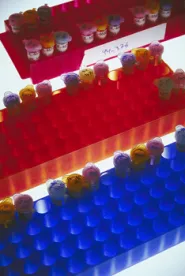Since the 21st Century Cures Act became law on December 13, 2016, we have been blogging on regulatory and clinical areas affected by its provisions (see here, here and here). On March 14, 2017, FDA made further progress on its Cures Act obligations by releasing in the Federal Register a proposed list of Class II devices that may be exempted from premarket notification (or 510(k)) requirements. The list is currently open for public comment until May 15, 2017. Under the Cures Act, the final list of exempted devices must be published by July 11, 2017.
FDA’s proposed premarket notification exemption list contains 337 Class II devices in Table 1, and further specifies 667 allergen products in Table 2 to be exempted as part of radioallergosorbent (RAST) immunological test systems (21 C.F.R. § 866.5750). The list of devices in Table 1 includes a vast assortment of devices, but the largest proportion of entries by far comes from 21 C.F.R. Part 862, Clinical Chemistry and Clinical Toxicology Devices, a category covering many genetic sequencing and in vitro diagnostic (“IVD”) devices. Specifically, FDA proposes excluding the following devices from premarket regulations:
-
Regulation Number 21 C.F.R. § 860.2265
-
High Throughput DNA Sequence Analyzer (Product Code PFF)
-
-
Regulation Number 21 C.F.R. § 860.2570
-
Instrumentation For Clinical Multiplex Test Systems (Product Code NSU)
-
Real Time Nucleic Acid Amplification System (Product Code OOI)
-
Mass Spectrometer For Clinical Multiplex Test Systems (Product Code OTA)
-
Micro Total Analysis Instrument System (Product Code OUE)
-
Complete Gene Expression Profiling Accessory Reagents (Product Code OVA)
-
DNA Genetic Analyzer (Product Code PCA)
-
Data Acquisition Software (Product Code PQQ)
-
This decision to exempt genetic testing and sequencing devices appears to be a major reversal from FDA’s previous attempts to regulate in this space (previously discussed here).
Although any devices remaining on the final list will be exempt from premarket notification requirements, other device regulations will still apply as normal to those devices. Therefore, manufacturers of such devices must still comply with quality system regulations (21 C.F.R. Part 820), as well as applicable labeling, medical device reporting, and traceability requirements. Importantly, manufacturers must follow relevant special controls guidances (e.g., Class II Special Controls Guidance Document: Instrumentation for Clinical Multiplex Test Systems) when designing, testing, and manufacturing such devices.
Comments are due by May 15, 2017, and may be submitted electronically via Regulations.gov in Docket Number FDA-2017-N-1129.




 />i
/>i
